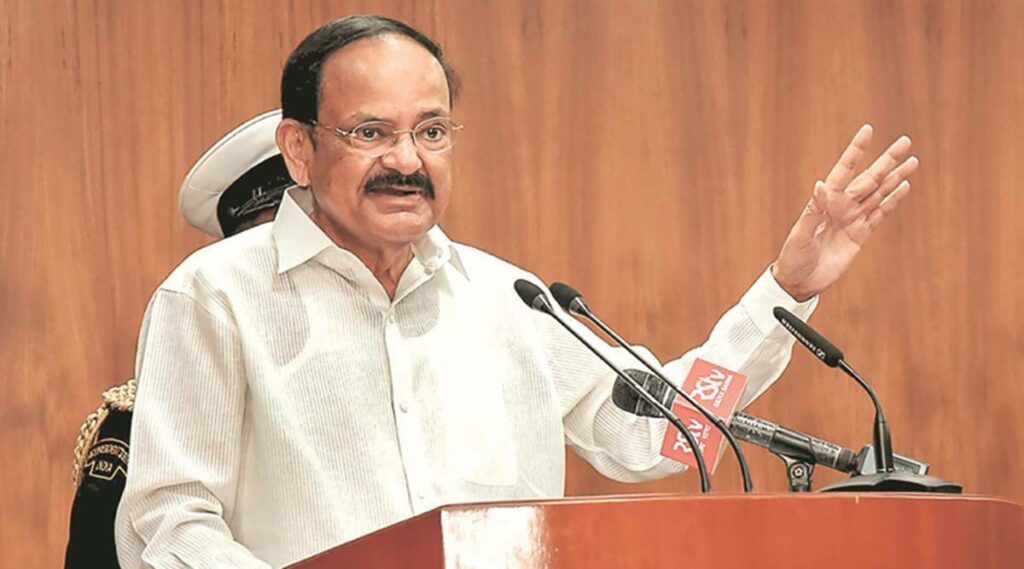NEW DELHI, Oct 13: India on Wednesday rejected China’s objection to a visit to Arunachal Pradesh by vice president M Venkaiah Naidu and again called on the Chinese side to work for the speedy resolution of the standoff on the Line of Actual Control (LAC).
The terse exchange between the two countries highlighted tensions caused by the standoff in eastern Ladakh, which has dragged on for more than a year-and-half, and fresh face-offs between troops of the two sides in Uttarakhand and Arunachal Pradesh sectors of the LAC.
Naidu made a two-day visit to Arunachal Pradesh over the weekend as part of a tour of the northeast and addressed a special session of the state assembly in Itanagar on Saturday.
Amid continuing tensions between them in Ladakh, India and On Wednesday, the Chinese Foreign Ministry issued a statement in response to a Chinese state media question on the visit, asking India to “stop taking actions that would complicate and expand the boundary issue.”
The Ministry of External Affairs (MEA) responded that it “reject[s] such comments”. “Arunachal Pradesh is an integral and inalienable part of India,” its spokesperson Arindam Bagchi stated. “Indian leaders routinely travel to the state of Arunachal Pradesh as they do to any other state of India. Objecting to the visit of Indian leaders to a state of India does not stand to reason and understanding of Indian people,” he noted.
Bagchi also rejected China’s contention that the visit would “complicate” boundary issues, amid ongoing tensions in Ladakh. “As we have mentioned earlier,” he said, “the current situation along the LAC in the Western Sector of the India-China border areas has been caused by unilateral attempts of Chinese side to alter the status quo in violation of the bilateral agreements. Therefore, we expect the Chinese side to work towards early resolution of the remaining issues along the LAC in Eastern Ladakh while fully abiding by bilateral agreements and protocols rather than trying to link unrelated issues.”
China’s statement came days after the latest round of military talks ended in a stalemate. The question to the foreign office on Naidu’s visit was posed by a state media outlet, in this case Xinjiang Television, suggesting the authorities wanted to make a statement on the issue.
Foreign Ministry spokesperson Zhao Lijian said “The Chinese government never recognises the so-called Arunachal Pradesh established unilaterally and illegally by the Indian side, and is firmly opposed to the Indian leaders’ visits to the area concerned. We urge the Indian side to earnestly respect China’s major concerns, stop taking any action that would complicate and expand the boundary issue, and refrain from undermining mutual trust and bilateral relations. It should instead take real concrete actions to maintain peace and stability in the China-India border areas and help bring the bilateral relations back on to the track of sound and steady development.”
The raising of Naidu’s visit to Arunachal Pradesh by the Chinese state-run media was an indication that Beijing intentionally raked up the issued against the backdrop of the lingering tensions due to the LAC standoff.
During his address to Arunachal Pradesh assembly, Naidu had highlighted the transformation of the northeast and said this was evidence of resurgence in the region’s development after being neglected for decades.
China has often objected to visits to Arunachal Pradesh by Indian leaders and even the Dalai Lama as part of its efforts to lay claim to the region, which Beijing refers to as “South Tibet”.
China claims up to 90,000 sq km in Arunachal in the eastern sector, while India sees China as illegally occupying 38,000 sq km in Aksai Chin in the western sector. While recent tensions have been focused on Ladakh in the western sector, both sides have also had recently face-offs in Uttarakhand, in the middle sector, and last week near Tawang in Arunachal, where some Chinese soldiers of a large patrol were detained for a few hours by the Indian Army after a minor face-off near Yangtse.
Chinese State media reacted angrily to the reports, and the Chinese military responded by leaking on social media images from last year’s clashes in the Galwan Valley, purportedly showing injured Indian soldiers detained by Chinese troops.
Amid the latest reports of a face-off in Arunachal, the 13th round of talks on the still unresolved Ladakh crisis held between Corps Commanders on Sunday ended in an impasse. The Army, in a statement on Monday, said the Indian side made “constructive suggestions” for resolving the “remaining areas” while the Chinese military in a statement said India had made “unreasonable and unrealistic demands.”
Both countries doubled down on their positions, and the Indian said the Chinese side “was not agreeable” and “could not provide any forward-looking proposals” in response to constructive suggestions for ending the standoff on the LAC. A spokesperson for China’s People’s Liberation Army (PLA) contended India was making “unreasonable and unrealistic” demands.
New Delhi has insisted that it is necessary to end the LAC standoff to ensure progress in the overall bilateral relations. Chinese leaders have said in recent months that the border issue should be delinked from other aspects of the bilateral relationship, a suggestion rejected by the Indian side.
The standoff on the LAC emerged in the open on May 5 last year following a violent clash in Pangong Lake area. Twenty Indian soldiers and four Chinese troops were killed in a brutal clash at Galwan Valley in June 2020. Following several rounds military and diplomatic talks, the two sides withdrew frontline troops from the north and south banks of Pangong Lake in February and from Gogra area in August and are discussing disengagement in Hot Springs. Differences also remain in Demchok and Depsang, as also in ongoing discussions to come up with new patrolling norms in the wake of last year’s LAC crisis, which saw China amassing thousands of troops in forward areas in contravention of past boundary agreements aimed to keep the peace.
(Manas Dasgupta)

